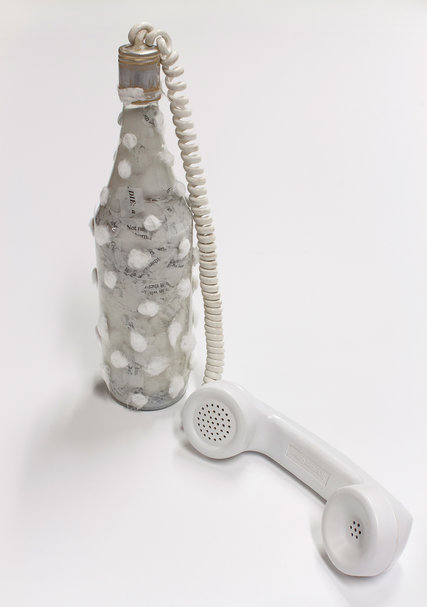
Credit: nytimes.com
(Courtesy of Lehmann Maupin)
It’s not often that we get to see two artists collaborate on a single subject, especially artists that come from entirely different disciplines. Carol Muske-Dukes is the former poet-laureate of California, whose work touches on women’s experiences and the value of human life. By contrast, Nari Ward is a multimedia artist who uses found objects as the basis of his stories, which focus primarily on poverty and racial discrimination. It wouldn’t seem like the two have much in common, but when they both approach the subject of death, they find harmony. Their work melds together, each bringing a new perspective on hospice care.
The collaboration came about as part of The New York Times’ T Magazine series, which joins two or more artists together in response to a topic or a piece of art. For the hospice piece, Nari Ward was asked to respond to Carol Muske-Dukes’ poem, “Live, Die: A Ghazal.” The result is a multimedia piece with a found-object style featuring a glass bottle stuffed with white cotton balls and strips of verses from the poem. Small bits of cotton balls stud the outside of the bottle. At the cap, Ward has cemented a telephone wire, which extends down from the bottle tip to a white telephone on the floor.
The symbolism in Ward’s piece, titled “Off the Hook,” adds to the thoughts expressed in Muske-Dukes’ poem. The work embodies what it feels like to send thoughts to a loved one at end of life — how those thoughts seem as though they’re being spoken into a telephone wire that leads nowhere. It also reflects the internal struggle experienced by those who still cling to life in their final days. Ward’s piece is beautiful in its crisp, stark whiteness, yet it also conveys a sense of deep frustration. As you gaze at it, you’re constantly brought back to that useless phone, a reminder of all of the things you can’t say or do to keep your loved one alive.

Credit: wikimedia.org
(Courtesy of Mercury Woodrose)
Ward succeeds in bringing out the feeling of irritation in the original poem, in which Muske-Dukes walks us through a night in hospice, watching over the narrator’s dying mother. Rather than describing it as a peaceful experience, she reflects on the inner turmoil that’s happening within the mother’s body. Part of the poem reads, “Cheered on by a chorus of voices as you die, ‘Go now! Go to the light!’ Still, don’t die, cries a dissenting voice within: a flickering live wire behind the nightlight’s angel face. Live.”
Both the poem and Ward’s piece perfectly describe what it feels like to slowly lose someone you love — walking that fine line between wishing for your loved one to die so that they no longer have to experience pain while also wanting them to stay forever. The crux of the poem lies with the lines, “Mother, I cannot die for you, I don’t know how. You brought me here alive. You taught me everything but how to let you die.”
Letting go is the hardest part of watching a loved one in hospice care. We’re taught that we should get comfort from the time we get to spend with them, but this comfort comes at a steep cost. The knowledge that there is nothing to do but wait eats away at our conscience, even as the logical part of us knows that it’s time for them to move on. And when the time comes to truly let go, releasing the hand of the person we love goes against every instinct. Nari Ward and Carol Muske-Dukes’ collaboration embraces this inner conflict, giving it both a name and a palpable presence.

 Death in Hospice, as Told through the Eyes of a Poet and an Artist
Death in Hospice, as Told through the Eyes of a Poet and an Artist


 First the Wealth Gap, Now the U.S. Has a Growing Health Gap
First the Wealth Gap, Now the U.S. Has a Growing Health Gap
 How to Comfort A Dying Loved One
How to Comfort A Dying Loved One
 Our Annual Seven Holiday Gifts for Someone Who Is Grieving, 2024 Edition
Our Annual Seven Holiday Gifts for Someone Who Is Grieving, 2024 Edition














